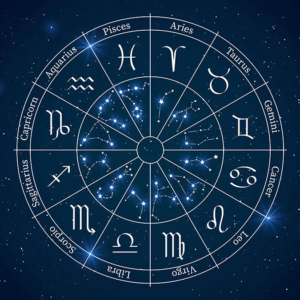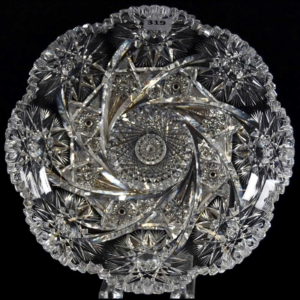Lazulite stone – properties, virtues & benefits
Lazulite stone is a deep blue mineral prized for its beauty and metaphysical properties. Rich in sPiritual energy, it enhances intuition and clairvoyance, while promoting communication and harmony. Discover the magic of this rare and fascinating gem.
CHARACTERISTICS OF LAZULITE
- Chakra: Third eye.
- Properties: Intuition, clairvoyance, communication.
- Astrology: Neptune.
- Zodiac: Sagittarius, Pisces.
- Elements: Water, Air.
- Colors: Deep blue, azure.
- Hardness: 5.5 – 6 on the Mohs scale.
- Chemical Formula: MgAl2(PO4)2(OH)2.
- Associated god: Thoth (Egyptian).
LAZULITE – HIS HISTORY
The name of this mineral has a particular origin which is explained in the dictionary. It comes from several terms such as “lazulith” in German, “lazuli” in Latin, “lithos” in Greek and “lazurstein” in an old German word. These words all contributed to the creation of two gemstones, “Lazulite” and “laPis lazuli”. Some experts believe the name may also have links with Persian and Arabic. The first discovery of this mineral was made in 1795 in a region of south-eastern Austria. Although the stones were referred to by various names over time, the IMA finally approved the current name in French.
LAZULITE STONE – ITS ORIGIN AND COMPOSITION
This mineral is of the metamorphic type and is found in aluminous rocks rich in silica, rutile and disthene. It also consists of pegmatites and high-temperature hydrothermal veins. By replacing magnesium with iron, a solid solution can be obtained, as with scorzalite. The crystals on the stone’s surface are sharp and bipyramidal, while its masses are micrograined and decimetric in size.
The mineral can be translucent or opaque and is distinguished from other minerals and gemstones by its deep azure-blue color. It can be purchased as a gem for a collection. Its composition comprises mainly magnesium, iron and aluminum phosphate.
The mineral system is monoclinic, with a Mohs scale hardness between 5.5 and 6 and a density of 3.0 to 3.2. It is insoluble and cannot be melted.
Two types of rock can produce this mineral: metamorphic rocks (such as Quartz, Andalusite, Muscovite and Rutile) and pegmatites (such as Quartz, Tourmaline, Beryl and Albite). Its main deposit is in Madagascar.

LAZULITE STONE – VERTIES AND PROPERTIES
PHYSICAL LAZULITE
Lazulite ore is reputed to bring a sense of well-being and self-confidence. It helps channel emotions and gain perspective when faced with a difficult situation. In some cultures, lazulite is a symbol of renewal, which means you’ll be able to open up to new experiences without fearing the future or the consequences. The stone supports you in all your actions and has a positive effect on the third eye chakra.
LAZULITE ON THE PHYSICAL LEVEL
The mineral presented here can stimulate immune defenses and support endocrine gland function. It has been shown to relieve headaches and help overcome addictive behaviors such as smoking by eliminating toxins. This stone is known for its anti-stress properties, promoting inner peace and relieving nervous tension. It helps restore balance between body and mind, and meditation in its presence is recommended to reap its full benefits.

LAZULITE STONE – CLEAN AND RECHARGE
To clean and recharge the Lazulite stone, follow these simple steps:
- Cleaning: Place the stone in a bowl of warm salted water for about 30 minutes to 1 hour. The salt dissolves any negative energies and impurities. You can also use spring water or distilled water if you prefer to avoid salt.
- Rinsing: Rinse the stone with clear water to remove any salt or residue. Be sure to use lukewarm water to avoid thermal shock which could damage the stone.
- Drying: Gently wipe the stone with a soft, clean cloth to dry. Avoid rubbing too hard to avoid scratching the Lazulite surface.
- Recharging: Expose the stone to natural sunlight or moonlight for a few hours. Sunlight brings vital energy, while moonlight promotes sPiritual and emotional connection. You can also use a cluster of quartz crystal or amethyst to recharge Lazulite. Simply place the stone on the cluster for several hours.
- Programming: Hold the Lazulite stone in your hands and concentrate on the intention or purpose you wish to attribute to it. Then visualize this energy infusing itself into the stone.
After these steps, your Lazulite stone will be cleaned, recharged and ready to be used for your sPiritual or energetic practices. It is recommended to repeat this process regularly to maintain the stone’s effectiveness.
WHERE DOES THE NAME LAZULITE COME FROM?
The name “lazulite” comes from the Arabic word “lazaward” or the Persian “lazhward”, meaning “blue”. These terms also gave rise to the name of the stone laPis lazuli, which is also a deep blue. Lazulite therefore takes its name from its characteristic deep blue or azure color. Although the two minerals, lazulite and laPis lazuli, share a similar color, they are chemically and mineralogically distinct.
WHICH CHAKRA DOES LAZULITE ACT ON?
Lazulite acts primarily on the third eye chakra, also known as the Ajna chakra. Located between the eyebrows, the third eye chakra is associated with intuition, clairvoyance, extrasensory perception and connection to our inner wisdom. By working with lazulite to balance and activate this chakra, you can foster greater understanding of yourself and your environment, develop your psychic abilities and strengthen your sPiritual awareness.
WHICH ASTROLOGICAL SIGN IS ASSOCIATED WITH LAZULITE?
The Lazulite stone is particularly associated with the astrological signs of Sagittarius and Pisces. The vibrations of this stone support the character traits and emotional needs of these signs, providing them with sPiritual energy and inner guidance. Sagittarius, in constant search of new knowledge and experiences, can benefit from the intuition and foresight that lazulite fosters. Pisces, meanwhile, being deeply empathetic and emotionally connected, can benefit from the stone’s harmonizing and calming properties.
SUMMARY OF LAZULITE STONE
Lazulite stone is a rare and precious mineral species, characterized by its azure-blue to intense blue-green color. It is often confused with the more common gem laPis lazuli, but lazulite has distinct properties and a different chemical composition.
Composition and properties:Lazulite is a phosphate of magnesium and aluminum, with the chemical formula (Mg, Fe)Al2(PO4)2(OH)2. It crystallizes in the monoclinic system and generally occurs as prismatic crystals, granular aggregates or compact masses. The stone has a hardness of 5.5 to 6 on the Mohs scale, making it relatively resistant to scratches and wear.
Origin and localities:Lazulite forms mainly in aluminum-rich metamorphic rocks such as schists and gneisses, as well as in pegmatites and hydrothermal veins. The main lazulite deposits are found in Austria, Brazil, Canada, India, Norway, the USA and Zimbabwe.
Uses and virtues:Lazulite is prized for its beauty and unique color, and is often used in jewelry-making for rings, pendants and earrings. In lithotherapy, the stone is associated with communication, creativity, self-confidence and emotional balance. It is also considered an energy amplifier, aiding concentration and intuition.
Maintenance and cleaning: to maintain and clean lazulite, we recommend avoiding thermal shock and aggressive chemicals. A simple cleaning with lukewarm water and mild soap is generally sufficient to preserve its shine. It’s also important to protect it from direct sunlight to avoid discoloration.

